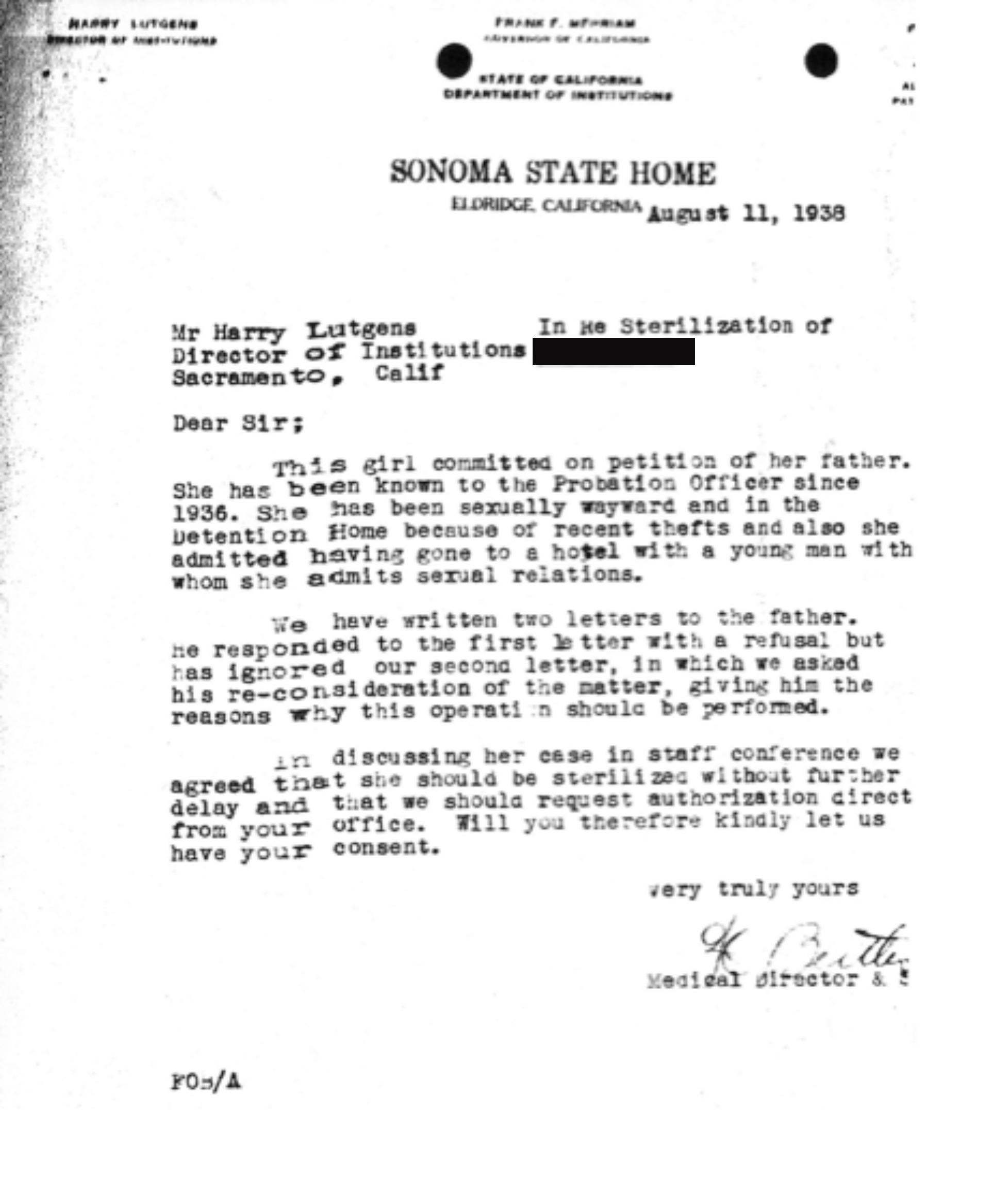Eugenic Rubicon is a developing prototype (http://scalar.usc.edu/works/eugenic-rubicon-/index) that uses mixed media and digital storytelling methods to share portions of this history. We have both examples of primary documents and newly authored materials that help to give a sense of children’s experiences of these practices, of different kinds of resistance enacted by patients, and how local practices at Sonoma State shaped this history.
This digital resource draws from and complements the demographic and social science research on eugenic sterilization in California being carried out by the Sterilization and Social Justice Lab at the University of Michigan. Working with a unique resource — nearly 50,000 patient records from California institutions from the period 1921 to 1953 — our project seeks to make this history visible. Additionally we are working to make the dataset we’ve developed accessible and interactive. These records were microfilmed by the California Department of State Hospitals in the 1970s and only recently discovered; The Sterilization and Social Justice Lab has digitized these reels and are using them in compliance with state and university regulations to create a dataset that adheres to protocols around sensitive health data. These materials create opportunities as well as challenges for storytelling and possibilities for humanizing stories of reproductive injustice. It also raises important legal questions about how to balance the “right to know” with the “need to protect” in the realm of medical and health histories.
Eugenic Rubicon: California’s Sterilization Stories is a multidisciplinary collaboration between Arizona State University and University of Michigan and that includes digital storytelling, data visualization, and the construction of interactive digital platforms. This project employs creative approaches to history, digital humanities, and foregrounds commitments to social and reproductive justice.
For my part, I’m currently working on a number of different ways to present materials from the Eugenic Rubicon project. Below is one example of a visual timeline, and I’ve also been working on sonification and haptification as a way into this history as well.
This is my first attempt at working with a TimelineJS – it’s imperfect because time is actually not the critical factor here for me, but I appreciate the way it allows me to lay out the material and then for users to move through it. I’ll be integrating media etc as time allows. Feedback is always welcome.
For now – please know that this presents notes from 20th century California medical records to authorize sterilization (legal under eugenics laws) of children between the ages of 8-14 and that it’s not an easy experience to sit with some of these words.
NEH, Humanities Collections and Reference Resources Foundations Grant, Digital Histories of Eugenic Sterilization: Developing a Multi-Modal Prototype and Best Practices for Sensitive Health Data (2016-2018)






